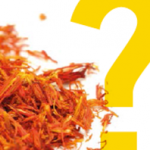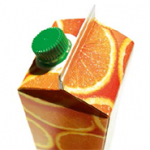8. Tea. This can have a variety of issues. For example, inside the tea bag could be sand, sawdust, starch, China clay, used tealeaves, and color additives. However, the problems do not stop there. Tea bags are made with plastic, such as nylon, thermoplastic, polyvinyl chloride, or polypropylene. This could allow the bags to leach compounds of unknown health hazards into consumers’ tea when steeped in boiling water.
9. Fish. Higher value fish is substituted with lower cost, more abundant fish varieties. A study by Oceana checked seafood samples from popular California sushi venues, grocery stores, and restaurants and found more than half of the fish was mislabeled: snapper was tilefish and white tuna or expensive ono was replaced 62 percent of the time with escolar.

© photocrew – Fotolia.com
10. Black pepper. This spice can be altered with juniper berries, papaya seeds, starch, buckwheat flour, and millet seeds.
Other commonly altered foods include turmeric chili powder, cooking oil, shrimp, lemon juice, and maple syrup. The common threads, whether fraud in milk or fish, are alterations that are difficult to detect and offer high potential for financial gain.
Types of Fraud
There are also a number of ways in which foods become fraudulent. Michigan State University identified the following food fraud incident types.
Adulteration: occurs when a component of the finished product is fraudulent (for example, adding melamine to milk).
Tampering: occurs when legitimate products and packaging are used in a fraudulent way; this could be through changing expiration dates or product up-labeling.
Over-run: a legitimate product is made in excess of production agreements.
Theft: a legitimate product is stolen and passed off as legitimately procured.
Diversion: the sale or distribution of legitimate products outside of intended markets.

© burnedcamera – Fotolia.com
Simulation: an illegitimate product is designed to look like but not exactly copy the legitimate product.
Counterfeiting: intellectual property rights infringement, which could include all aspects of the fraudulent product and packaging being fully replicated.
Consequences
Food fraud affects both consumers and food manufacturers. For consumers, one of the biggest concerns is health risk. While not all food fraud results in a public health risk, any act involving intentional adulteration of food has the potential to harm. From something as minor as a local fish market substituting a more expensive fish for a different type of seafood to something as widespread as the horsemeat scandal in Europe.
Since organic food can tout prices often twice as high as conventionally produced food, the risk for fraudulent labeling has grown just as fast.
One of the most significant impacts of food fraud that affects both consumers and food manufacturers boils down to loss of consumer trust. A recent example of this is the horsemeat scandal in the European Union. This occurred when items advertised as 100 percent beef were in fact horsemeat. Market researcher Mintel found that six months after the scandal hit, only half of all Brits trusted the food industry to provide safe food to eat. Eighteen percent of consumers who had previously purchased ready meals labeled as beef said they would avoid ready meals with beef as a result of the scandal, while 10 percent said they will now avoid any frozen ready meals altogether.

© Tesgro Tessieri – Fotolia.com
Prevention
Since food fraud at its root is a criminal activity, companies need to combat food fraud by implementing preventive measures that increase the likelihood of detection or the difficulty in carrying out the crime. Organizations should consider a food defense strategy that addresses the entire food supply chain through the four A’s of actionable food defense: assess, access, alert, and audit.
ACCESS THE FULL VERSION OF THIS ARTICLE
To view this article and gain unlimited access to premium content on the FQ&S website, register for your FREE account. Build your profile and create a personalized experience today! Sign up is easy!
GET STARTED
Already have an account? LOGIN

